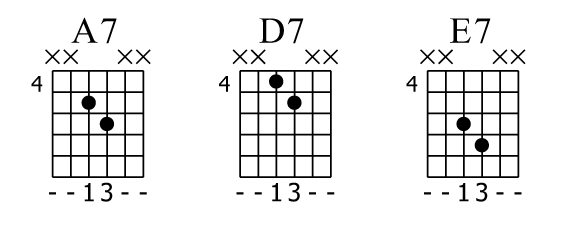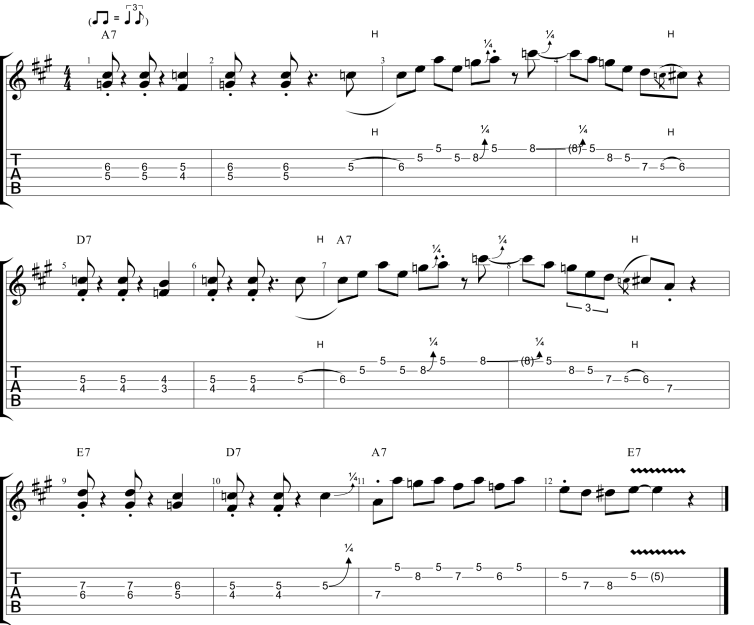Blues Guitar Comping
Playing On The Porch – How To Play Blues Guitar On Your Own
Comping Lesson by Andi Saitenhieb. Taken from Playing On The Porch – How To Play Blues Guitar On Your Own
In the last installment of this series we got to know about comping in general. Today we’ll take a closer look at comping, add some lead lines and then we go back and forth between lead and accompaniment. Fasten your seat belt! 🙂
Comping – A closer look
Before adding the solo licks we need to take a closer look at the concept of comping. Until now we learned a few cool rhyhms, one or two bars in length, and then repeated them throughout the 12 bar form. In reality you would change rhyhm from bar to bar. Basically you are improvising, but only rhythmically. Here is an example of the real deal:
This example only uses the tritones we already know from the last part of this series (plus a few chromatic approaches from below as ornamentation). There is no exact notation here because you should come up with something similar on your own.

This is something you could play when accompanying in a band setting when you are not the soloist. Someone is singing, someone is playing fills, and you are comping all the time.
Tip: The most important thing in music is rhythm and groove! Keep it simple at first, just alternate between two different rhythms, and KEEP GROOVING! Then add a third rhythm to the mix. When you feel comfortable comping with these three rhythms, add another one and so on. Always remember: It’s better to repeat a rhythm or to leave a bar of space than to stumble rhythmically!
Phrasing I – Accompanying a singer
When you are the soloist that plays the fills between the vocal phrases, the first thing you need to know is when to play lead and when to be comping. In the Blues this is pretty obvious, because most of the time the melody and the phrasing stays pretty much the same from chorus to chorus throughout a song.
Just listen closely to the singer during the first verse and you know when to play for the rest of the song. A very common phrasing is to have vocals and lead guitar alternating every two bars. Here is a little tune I composed for you, called the ‘Two Bar Phrase Blues’:

Off course this is only one way of subdividing a chorus (although this is the most common one). There are many others, but again: As soon as you listened closely to the first chorus you know what to expect for the rest of the song.
Phrasing II – Soloing
When you are comping on your own (or the only other instruments are a drummer and a bassist) and it’s time for a solo, this two bar phrasing might be a little too long: Every two bars there is only comping, but no melody or singing. When soloing without another accompanist, I suggest using one bar phrases like this:

Now try to play something similar over a complete 12-bar progression
When you want to use longer phrases, it might be a good idea to repeat the comping between the lead lines so it becomes a recognizable riff (like I did in the ‘Two Bar Phrase Blues’).
All this stuff can be played in a band setting or when you are on your own. The more musicians there are, the smaller are the voicings you play and vice versa. When playing on your own, you may want to add the root notes of the chords (see the last installment of this series) and maybe even some more notes.
If you want to learn more comping concepts like this you should check out my ebook Playing On The Porch – How to Play Blues Guitar On Your Own, available on my website.
Stay tuned!
“The artists you work with, and the quality of your work speaks for itself.”
Tommy Emmanuel
© Copyright Fundamental Changes Ltd 2025
No.6 The Pound, Ampney Crucis, England, GL7 5SA
